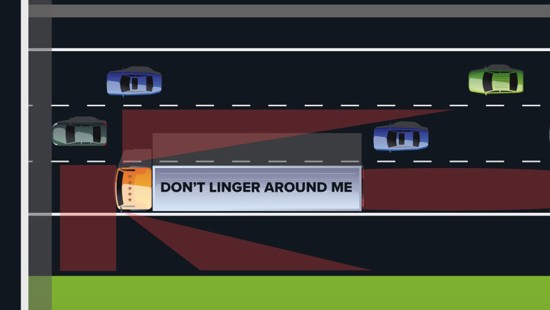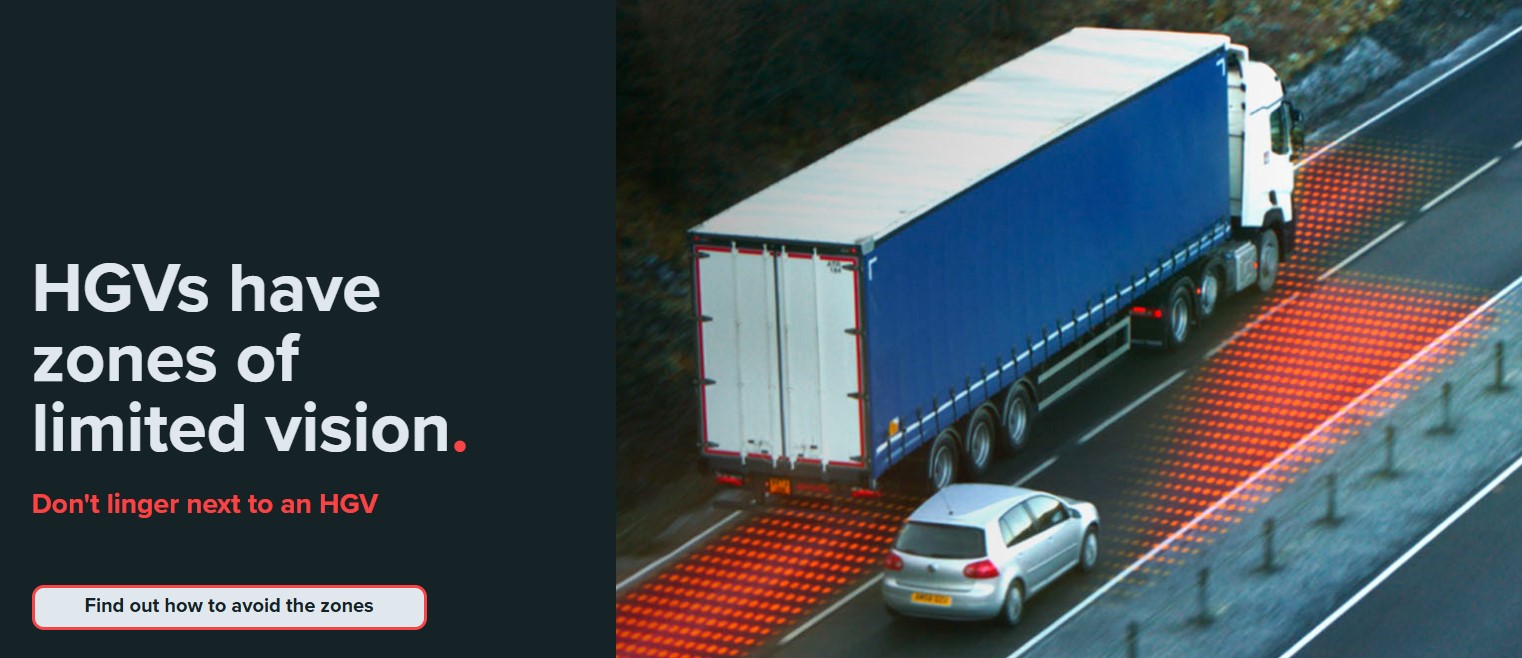Just passed your driving test? Here’s why you need to ‘Know the HGV Zones’

With thousands of newly qualified drivers expected to take to the motorways for the first time this summer, National Highways and RED Driver Training are urging them to brush up on motorway safety, especially when driving near heavy goods vehicles (HGVs).
- Two in five (41%) newly qualified drivers panic when a HGV is ahead, behind, or alongside them
- Over half (53%) of newly qualified drivers had never driven on a motorway before passing their test
- Heavy goods vehicles (HGVs) form approximately 9% of motorway traffic but are involved in 20% of serious collisions
Summer is a peak season for new drivers, with August consistently seeing some of the highest driving test pass rates. According to the Driver and Vehicle Standards Agency (DVSA), an average of 49.2% passed their tests during August over the past three years, with 68,343 drivers passing in August 2024 alone.
However, data shows that young drivers under 30 account for a quarter of all car and van drivers killed or seriously injured in collisions involving HGVs.
In response, National Highways have joined forces with RED Driver Training to encourage all drivers, but particularly recent licence holders, to Know the HGV Zones and follow our essential safety tips.

HGVs have four major areas of limited vision. If you can’t see the driver’s mirrors, they probably can’t see you. There are three points to remember when travelling near to HGVs;
- Overtake with care: Once you begin overtaking, move past the HGV safely and steadily. Don’t linger alongside and return to the left lane only when it’s safe to do so. Never cut in.
- Avoid tailgating: Following too closely means the HGV driver can’t see you, and you won’t have time to react if they brake suddenly.
- Be visible: Make it easy for HGV drivers to see you by staying out of their blind spots and using your indicators clearly and early.
Colin Stevenson, Road Safety Information Lead at National Highways, said:
“Summer is a really exciting time for young newly qualified drivers – many will be going on day trips with friends, heading to festivals, celebrating exam results, or even preparing to move away to university. As part of these new adventures, many will be driving on the motorway for the first time.
“Driving near large vehicles like HGVs can be intimidating. That’s why we’re urging all new drivers to understand how to stay safe around them. Knowing the blind spots, giving HGVs space, and staying visible can make all the difference in helping everyone get to their destination safely.”
Despite a 2018 law change allowing learner drivers to use motorways with an approved instructor and a dual controlled car, new research from National Highways and RED Driver Training reveals that over half (53%) of new drivers had never driven on a motorway before passing their test.
This lack of motorway experience is reflected in two in five (41%) newly qualified drivers admitting to panicking when an HGV is nearby, highlighting a need for better preparation around large vehicles.
Seb Goldin, CEO, RED Driver Training, said:
“At RED, our priority is always to ensure that new drivers understand all the rules of the road, including correct behaviours on motorways and how to behave around larger vehicles on the road.
"Experience is a major factor in driving safely on the motorway and we would encourage all new or learner drivers to consider additional training, which involves motorway driving with an approved instructor."

For more information, please visit National Highways' dedicated Know the HGV Zones webpage, by clicking here: Know the HGV Zones
To learn more about the RED Driver Training and additional coaching for motorway driving, please click here: Red Driver Training lessons
Notes to Editors
National Highways' Know the Zones website page - please click here
Advice from National Highways on driving round large vehicles and HGVs - please click here
Moving footage from National Highways' Know the Zones TV advertisement - please click here
Statistical detail:
- Data on driving tests taken from Driver and Vehicle Standards Agency (DVSA) Car driving tests conducted, passed, pass rates and forward bookings, January 2019 to date: Great Britain
- Further research was carried out by Censuswide involving a sample of 1,000 newly qualified drivers aged 17 and over who passed within the last five years, asking them a variety of questions about their experiences driving on motorways and around HGVs in particular. The data was collected between 6–10 June 2025.
- Data on collisions involving HGVs and drivers under 30 taken from STATS19 (2010-2019)
Statistics on HGV motorway traffic and their involvement in serious collisions taken from STATS19 (2010-2019). - To drive on motorways learner drivers must be accompanied by an approved driving instructor (ADI) in a dual-controlled car and the car must display L-plates.
About RED Driver Training:
RED Driver Training, part of RDS Driving Services Ltd, is one of the UK’s largest driving trainers. RED’s franchised Driving Instructors teach in excess of 100,000 learner drivers to pass the UK government driving test each year. RED delivers a tailored teaching programme focused on helping its students become safe and confident drivers beyond the test stage, including lessons and the ‘Learn to Drive with RED’ App. For more information, please visit www.reddrivingschool.com
About National Highways:
National Highways is the wholly government-owned company responsible for modernising, maintaining and operating England’s motorways and major A roads.
Real-time traffic information for England’s motorways and major A roads is available via the Traffic England website, local and national radio travel bulletins, electronic road signs and mobile apps. Local X (formerly Twitter) services are also available.
For further information please contact National Highways' press office (24hrs) on 0844 693 1448 and select the most appropriate option:
Option 1: National enquiries (9am to 5.30pm) and out of hours for urgent enquiries
Option 2: North West (9am to 5.30pm)
Option 3: Yorkshire and North East (9am to 5.30pm)
Option 4: West Midlands (9am to 5.30pm)
Option 5: East Midlands (9am to 5.30pm)
Option 6: East (9am to 5.30pm)
Option 7: South East (9am to 5.30pm)
Option 8: South West (9am to 5.30pm)
